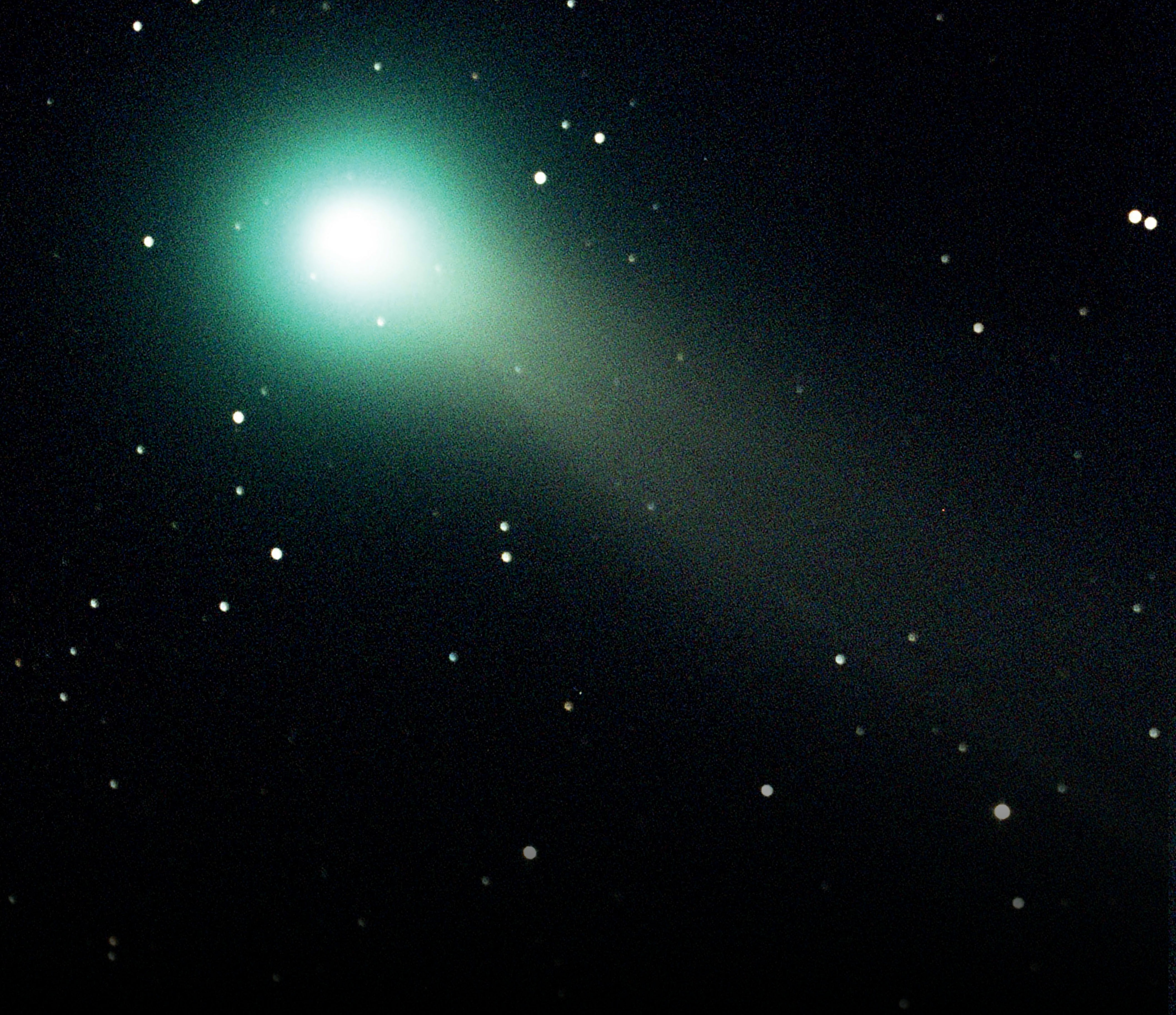
Taken in 2013, this image of Comet Lovejoy was snapped when it was almost 60 million kilometres from Earth
© NASA/MSFC/Jacobs Technology/ESSSA/Aaron Kingery
What’s the difference between an asteroid, comet, meteor and meteorite? They all sound similar but they do have some distinct differences. As we know, comets are frozen bodies orbiting the Sun whose vaporising ice forms their tails, whereas asteroids are made up of metal and rock and are mostly found in a region of space between Mars and Jupiter called the asteroid belt. Both comets and asteroids were formed during the formation of our Solar System around 4.6 million years ago. Asteroids smaller than the size of a pebble are called meteoroids. Meteors and meteorites are cosmic crumbs from broken comets, or chunks thrown off a planet’s surface, that hit another planet, like Earth. They can range in size from just a grain of sand to extinction-event space rocks kilometres wide, like the one that wiped out the dinosaurs about 66 million years ago. If these are vaporised at high speeds in the atmosphere they’re referred to as meteors. If they survive the intense heat of atmospheric entry and hit the ground, they’re called meteorites.
They’re known as cosmic snowballs, but rather than compacted snowflakes, comets are frozen balls of gases, rock, ice and dust in huge orbits around the Sun. You wouldn’t be able to hold one in your hands either, as they can be the size of a small town. When they approach the Sun and heat up, they release massive tails of gas and dust that can stretch for millions of kilometres behind them.